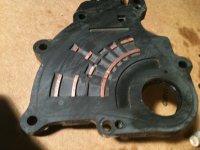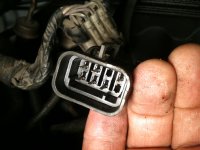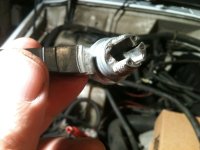JamesTheScot
New member
I have another thread on an intermittent failure to crank problem.
So after looking at nearly everything else, I decided to take the NSS off and examine/clean/replace it.
So I disconnected the harness and got the NSS loose from the transmission.
So as I am pulling the NSS and the wires down through the engine, the harness connector jams up where I can't see it.
I contort my arm and hand up over the transmission and I find what feels like a zip tie or some sort of thing to narrow for the connector or the NSS itself to slide through. And I can't see any way to get some snips or a knife blade up and over and around through there to cut it. So I a stuck now with an NSS swinging about 6 inches below the transmission and the harness connector slid back where I can't see it to reach it.
No way am I going to tow this thing into a shop just to get that thing cut. For the price of a tow, I could just about pay for a new NSS. Needless to say I am so ****ed right now that I could chew through nails. Do the braniacs that design these things not realize what it takes to work on them?
Any ideas how to get the wires free of that tie?
So after looking at nearly everything else, I decided to take the NSS off and examine/clean/replace it.
So I disconnected the harness and got the NSS loose from the transmission.
So as I am pulling the NSS and the wires down through the engine, the harness connector jams up where I can't see it.
I contort my arm and hand up over the transmission and I find what feels like a zip tie or some sort of thing to narrow for the connector or the NSS itself to slide through. And I can't see any way to get some snips or a knife blade up and over and around through there to cut it. So I a stuck now with an NSS swinging about 6 inches below the transmission and the harness connector slid back where I can't see it to reach it.
No way am I going to tow this thing into a shop just to get that thing cut. For the price of a tow, I could just about pay for a new NSS. Needless to say I am so ****ed right now that I could chew through nails. Do the braniacs that design these things not realize what it takes to work on them?
Any ideas how to get the wires free of that tie?






